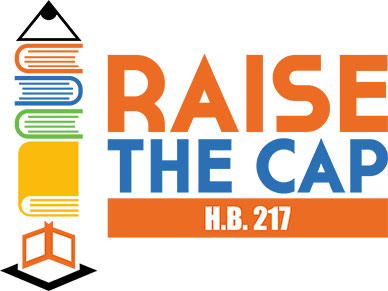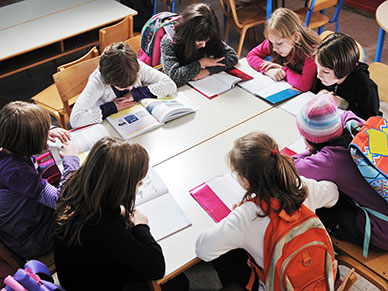
by Eric Cochling | Mar 29, 2017
A large majority of Georgians support expanding school choice in the state, including more than 80 percent of African-Americans and Latinos. The numbers are astounding, and for good reasons.
Georgia’s students continue to struggle in national measures of academic achievement, and the school choice options that currently do exist—like the tax credit scholarship program—are capped at such low levels that there are constantly long waiting lists.
Since it was first passed in 2008, the tax credit program has given tens of thousands of students the opportunity for a brighter future at a private school, but it has never served all the students who have applied for a scholarship. To do that, the program needs to grow.
First, a bit of background. Georgia’s tax-credit law allows private citizens and corporations to receive tax credits for donations to nonprofit Student Scholarship Organizations (SSOs), which then administer scholarships across the state on behalf of needy kids. In 2015 alone, over 13,500 students received scholarships.
The state House recently approved HB 217, which would raise the program’s current cap from $58 million to $100 million in a graduated course of six years, effectively doubling its size. But the Senate removed the slow and steady growth in the program in favor of a one-time increase in the cap to $65 million, hardly meeting current demand. Furthermore, the Senate version of the bill included an extreme cut to the administrative allowance available to the non-profit student scholarship organizations administering the program, which would effectively push smaller organizations out of the market.
Some lawmakers claim that SSOs spend too much on administrative overhead, including activities like fundraising, marketing, and government compliance. Currently, SSOs are limited to keeping a specific percentage of their total proceeds for administration, depending on how much they take in: 10 percent for the first $1.5 million raised, 7 percent for amounts between $1.5 million and $10 million, 6 percent for amounts between $10 million and $20 million, and 5 percent for amounts over $20 million.
This sliding scale acknowledges that as SSOs are able to raise more money, they don’t need to devote as large a percentage of their budgets to overhead. It also recognizes that smaller or start-up organizations still need a slightly higher percentage to be effective and comply with the law.
The Senate substitute to HB 217, backed by Lt. Governor Cagle and Senate leadership, eliminates the graduated administrative allowance in favor of an across-the-board cap of 3 percent. Importantly, most SSOs in Georgia don’t raise enough money to even afford full-time staff under the 10 percent administrative allowance, let alone a 3 percent cap. These organizations would be most harmed by the Senate change, while the largest SSOs would be least affected by the 3 percent cap due to their bigger budgets.
What’s the result? Small SSOs would be pushed out of the market in favor of a handful of large organizations.
Here’s what this scenario would look like in reality: Four SSOs raised less than $100,000 in 2015 and awarded scholarships to 308 students, almost half of whom come from families making less than $30,000 a year. The proposed change would immediately hamstring these organizations by limiting them to less than $3,000 a year for administration, forcing them to close their doors and returning 308 students back to schools that were not serving their needs.
Is that a result we want?
Aside from claims of administrative bloat, supporters of the Senate substitute bill make two more arguments: First, that SSOs should be brought more in line with other nonprofits in Georgia. And second, that the tax credits law should more closely mirror Florida’s program, which caps administrative allowances at 3 percent.
Both claims don’t stand up to even basic scrutiny. In the first place, of Charity Navigator’s 68 top-rated charities in Georgia, only one operates on less than 3 percent of funds for administration—and that organization has total revenues of more than $547 million. So it’s false to claim the proposed 3 percent cap would bring SSOs more in line with other nonprofits.
Secondly, looking at Florida’s law is like comparing apples and oranges. The Sunshine State only has two nonprofit scholarship granting organizations, only allows corporate donations, and has a total program cap of $500 million compared to Georgia, which has more than 20 active SSOs and a statewide a cap of $58 million.
In the end, if the Senate truly wants to bring Georgia more in line with Florida, lawmakers would be better served to raise the statewide program cap to match Florida’s rather than reduce the overhead allowance. If they did, the program would provide school choice to nearly 130,000 students and propel Georgia into the leadership position among states providing families with real options.
With only one day remaining in the legislative session, we hope the Senate and House can come together to agree on a bill that restores growth in the program and hope for thousands of desperate students and families.

by Georgia Center for Opportunity | Mar 29, 2017
Education savings accounts could help Georgia lawmakers ease overcrowding in public schools, an ongoing challenge for some school districts. Legislators are considering bills that would allow students to use an account to choose how and where they learn, modeled after the accounts in Arizona, Florida, Mississippi, Tennessee, and Nevada.
Under the proposed legislation, and as described on this blog, the state deposits a portion of a child’s funds from the state formula into a private account that parents use to buy educational products and services for their children. Parents can choose different learning options like online classes, personal tutors, and private school tuition simultaneously, customizing a child’s education to meet their needs.
Some Georgia parents have complained of surging enrollment in public schools in recent years. Between 2014 and 2016, Georgia public school enrollment increased 7 percent or 117,000 students, according to state and federal sources. Decatur’s increases have been dramatic: District schools experienced a 123 percent increase over the past decade. Recent reports of overcrowding have also come from Horry County, Dalton, and DeKalb. In some cases, students have been forced to sit on the floor of school buses on the way to school due to class reassignments.
In Dalton, a Daily Citizen headline said residents are imploring lawmakers to “do something” about student overcrowding. Data from states where lawmakers have enacted education savings accounts demonstrate that student participation can help relieve the pressure on schools that see rapid enrollment growth. In Arizona, 3,500 are using accounts today (approximately 1 percent of the eligible student population). In Florida, 7,000 students are using the accounts. These modest figures can help with overcrowding issues.
Estimates that 156,000 Georgia students would use the accounts after 3 years and cost taxpayers $700 million bears no resemblance to student participation or funding in other states where students are using the accounts. This estimate is equivalent to having all the students leave DeKalb County and Atlanta Public Schools.
Even Georgia’s existing private school choice options which have been in place for many years have not grown this fast. Georgia’s private school scholarships for children with special needs have been available for nearly a decade, and fewer than 4,000 students are using a scholarship. Another Georgia private school scholarship offering is available to nearly all state students, and 13,000 children are using a scholarship (less than 1 percent of students in the state)—a figure that has held steady since 2012.
Meanwhile, lawmakers should consider how education savings accounts can be an efficient use of taxpayer money. According to the legislation, each Georgia account would be worth $4,500. The average student attending a traditional public school in Georgia is funded at $10,300. Average per student funding figures indicate Decatur’s 4,662 students—an all-time high—require more than $48 million from taxpayers annually. Their education savings accounts would use less than half this amount.
Estimates that education savings accounts would syphon students and funds from Georgia schools do not correspond with existing evidence. But the accounts can be a solution for Georgia lawmakers to moderate crowded classrooms while also providing families more educational options.
For more information about ESAs in Georgia, click here.

by Eric Cochling | Mar 23, 2017
We know that to avoid poverty, it is essential to get a high school diploma, maintain a steady job, and marry before having children (see research from the Brookings Institution and Harvard University on these points). Not only are they key to avoiding poverty, upward mobility and financial stability are closely tied to this family-education-work sequence, as well.
That is why our recent reports are so disturbing. They show that most of our welfare programs are systematically undermining two of the three keys to avoiding poverty and are doing so for some of the most vulnerable groups in our society.
In the first paper, Disincentives for Work and Marriage in Georgia’s Welfare System, we show that many of our welfare programs – alone or when combined –actually penalize earning more and create dramatic “welfare cliffs”.
For many parents on public assistance, receiving a raise or working longer hours can result in dramatic reductions in welfare benefits, often completely erasing what they gain by working more or receiving a raise. Even worse, there are times when earning more money through additional work or a pay raise can result in less income to the family because government benefits are reduced so much all at one time.
When families find themselves in this position, they are effectively locked into dependency, unable to work themselves into self-sufficiency without having to endure sometimes long, crippling periods of financial hardship.
To make matters worse, a similar set of perverse incentives exist when a parent on welfare decides to marry.
For many moms on public assistance for example, deciding to marry a boyfriend or the father of their children can mean that family income is dramatically reduced due to an immediate and steep loss of benefits. In many cases, the disincentives to marriage only go away if the potential husband is earning much more money than would be expected or likely under the circumstances. The result is that these moms must choose between forming a family (and the financial and relational stability it can bring in the long-term) or the short-term financial health of their families.
For a parent in this position, it is easy to see why many would simply choose to stay single and cohabit rather than marry. Unfortunately, research also shows that cohabiting couples struggle with relational instability in ways that married couples do not, so the welfare system ends up encouraging people to enter into relationships that are less likely to last and less likely to provide the stability that would allow them to escape poverty.
While the welfare system was not intentionally designed to work this way, it is unjust nonetheless. If it worked as it should, the system would encourage work and family formation at every turn – as the surest antidotes to poverty.
That is why in our next report, we will be setting out a suggested set of reforms that the state and federal governments can adopt to reform the system in a way that creates a sustainable safety-net that encourages the behaviors that we know are needed for individuals and families to escape and stay out of poverty. We will also be providing a plan for a how a state can implement these reforms on the ground if it chooses to take on reforming the system.
If you want to see how the welfare cliff works for different family types and in each of Georgia’s 159 counties, visit www.welfarecliff.org.

by Georgia Center for Opportunity | Mar 16, 2017
While lower, middle and upperclass can be defined in various ways, a State of the States report, defined lower class as those who did not complete high school; middle class (or moderately-educated, as referred to in the report) as those who graduated high school but did not go on to complete college; and upper class individuals as those who graduated from college.
The middle class has seen a 29 percent rise in women cohabiting between 1988 and the late 2000s. Historically, the lower class has always had a higher percentage of women who cohabited, but with the recent percentage increases, the middle class is almost equal to the lower class.
Out-of-wedlock childbearing more than doubled for the middle class between 1982 and the late 2000s; completely outpacing the lower class with a more than 30-point jump. In contract, those considered highly educated, or college graduates, only saw a very small increase of out-of-wedlock births.
Both lower and upper class couples had a decrease in divorce rates from the 1970s to 1990s (with the drop in divorces for lower class individuals, unfortunately, primarily attributable to much lower marriage rates).
The increase in cohabitation, divorce, and out-of-wedlock childbearing shows the middle class is now morphing into something that looks much more like the lower class. These changes appear to, at least in part, be driving a perception that the traditional “American Dream” is more and more out of reach for the average Americans. As the report points out, however, the American Dream is becoming more elusive because some of the habits that help assure financial success – like having babies after getting married – are becoming much less common.
While many factors have contributed to the middle class falling further behind the upper class, (including unemployment, lower wages, fewer social connections and less social capital) the strongest factor seems to be the failure to follow the ‘success sequence.’
As explained by Bradford Wilcox and Elizabeth Marquardt, the success sequence has long been the routine of those considered the upper class. They “embrace[d] the bourgeois values and virtues—for instance, delayed gratification, a focus on education, and temperance…[and] adhere devoutly to a “success sequence” norm that puts education, work, marriage, and childbearing in sequence, one after another.” Until quite recently, the middle class has embraced the important aspects of the success sequence in its behavior, which has allowed it to enjoy financial stability. By abandoning marriage, the middle class is abandoning the institution that allowed it to thrive. In many ways – and especially financially – it is now paying a price.
In order for the middle class to reappear from its disappearing act, marriage and the key supports that make successful family life more likely – a quality education and stable employment – must be addressed. This is the essence of our work and the decline of the middle class in America is one of the reasons we believe this work is more urgent than ever.



